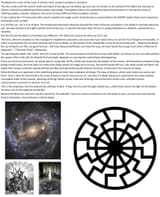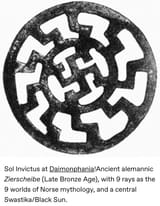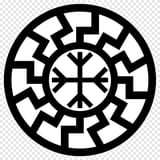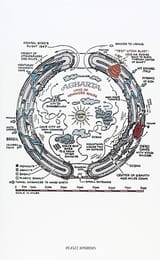>>41326545 (OP)
I don't really use this website so hopefully I'm doing this right, I typed up an explanation what I think most people miss.
The black sun, as a mythological archetype, can be seen across many cultures. From Old Norse prophecy, Greek/Hellenic traditions, to Hindu cosmology, from Hermetic/Daoist inner alchemy, even in Egyptian and Native American mythic circles as well.
Rather than a literal dark sun, it represents the hidden or eclipsed aspect of illumination -- the moment of death, descent, or chaos that precedes a glorious transformation.
In each tradition, this “dark sun” marks the passage between destruction and rebirth -- the nigredo before enlightenment, the calm before the storm, or the chaos within order that signals the renewal of creation.
Even in Xtian apocalyptic imagery (“the sun became black as sackcloth”) we find echoes of this pattern, and it’s not surprising that figures like Himmler later distorted such symbols for their own mythmaking -- seeing themselves as actors in a cosmic drama drawn from ancient and biblical archetypes, even believing himself and the SS to play a role in as the final “Spear of Destiny” (of which killed Yeshua, symbolically putting an end to the two centuries of abrahamic rule over the Aryan)
I’ll give a brief example on a few of the listed cultural mythologies:
In the Völuspá, the sun turns black at Ragnarök, the moment the world-tree trembles and the old order dies, only for a new sun to rise from the sea. The “blackened sun” here is the stillness before rebirth -- destruction as the necessary prelude to renewal.
Apollo’s winter exile to Hyperborea and Helios’ nightly descent beneath the earth both symbolize the hidden, “black” sun -- light withdrawn into darkness. In Orphic and Neoplatonic thought, this becomes the “sun behind the sun”, the unseen divine light that endures through cosmic death.
(1/3)







